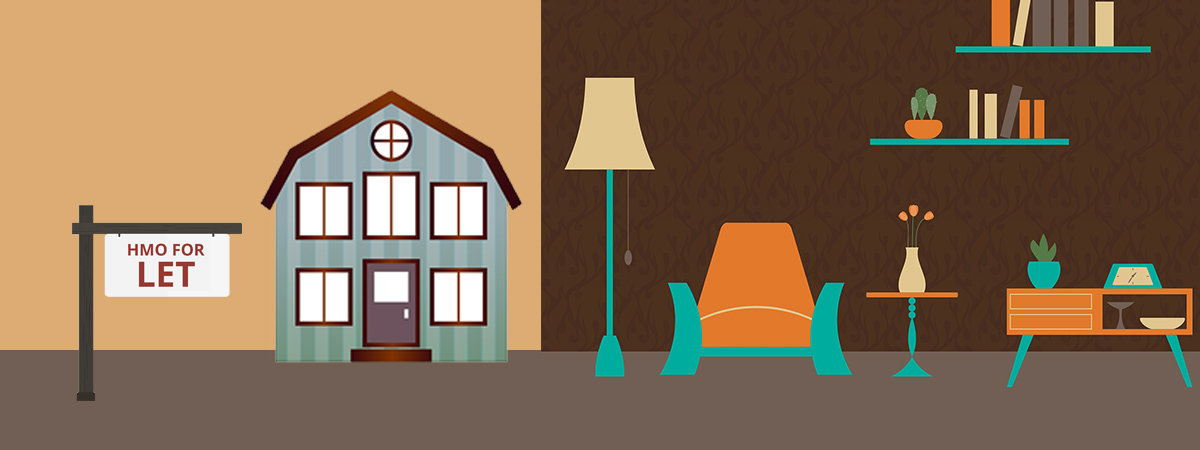
It’s not a legal requirement for HMOs – but landlords are generally expected to fully furnish HMO properties, which includes kitchen/dining area, lounge, and bedrooms.
So, what furnishings and fittings should you provide with your HMO and how much should you spend?
One of the cons of being a HMO landlord compared to a single let landlord is the added startup and running costs, and that’s largely due to the necessity of having to fully furnish the property, and then maintain the items.
Amusingly, there’s quite a contrast between my approach for single lets compared to HMOs when it comes to furnishings and fittings, because as a rule of thumb, I avoid providing any furniture for Single lets like the plague, but for HMOs you’d be clinically insane to do anything but to fully furnish.
Minimum furniture requirements
| Room | Items |
|---|---|
| Bedroom | Bed, mattress, wardrobe, drawers, curtains. |
| Kitchen | Fridge/freezer, storing area, oven, hob, washing machine, drying facilities, microwave. |
| Living / Lounge | Table and chairs, sofa, TV, DVD player, storage. |
Everything should be provided in sufficient quantities and sizes, bearing in mind the number of tenants living in the property. So, for example, if you have 6 tenants, you should provide a fridge that is suitable for storing food for that many people.
How much should you spend on furnishing your HMO?
There is no magic number, but I usually spend no more than £500 on furniture per bedroom, with the understanding that I’ll have to replace most items every 3-5 years. HMOs by nature are extremely vulnerable to wear and tear and damage, so it’s a never ending game of repairing and replacing. But of course, the income supports naturally occurring wear just fine.
Providing too little furnishings can have a significantly negative impact on finding HMO tenants, because from the tenant’s perspective, one of the major perks of HMOs is that the furnisher is provided. But I also believe that providing too much unnecessary furnishings can be very damaging to cash flow, because what you need to remember is that you are responsible for repairing and maintaining every item that you provide in the property. Essentially, the less you provide, the less you are responsible for.
Being cheap generally costs more!
Many new HMO landlords make the grave mistake of going in cheap – buying flimsy furnishings and fittings with the intention of saving a small fortune.
From my experience, cheap and flimsy is a false economy, particular with HMO properties – the initial savings are usually swallowed alive ten-fold when everything starts to fall apart, and items need replacing and repairing.
When choosing furnishings, it’s important to strike the right balance between budget, durability, and style.
Durable furnishings are particularly essential! Actually, it’s key.
Remember, HMOs are busy places, with typically six people coming and going all the time, so your property – along with everything inside it (e.g. carpets) – naturally gets good usage, so you will want your furnishings to withstand the pressure to a reasonable degree.
Who’s responsible for damages to furnishings?
There’s a few key points I want to touch on here, so it’s probably best if I just list my thoughts…
- Damage in communal areas: if there is disrepair or damages caused to items provided with the property in communal areas, then the landlord is still responsible for dealing with the situation. Unlike in normal single let situations, the tenant would be responsible.
However, this does not apply to damages caused to 1) the tenants own possessions 2) items tenants are entitled to remove from the property, or 3) furnishings provided in the tenants room.
- Wear & tear: no one is ‘guilty’ for wear and tear as it’s a natural side-effect of every day usage, and as already stated – HMOs are extremely vulnerable to it by design.
Wear and tear will include things like carpets fraying over time and thinning upholstery. Eventually it will be the landlords responsibility to replace items that suffer the consequences of wear and tear.
- Nature of the beast: unfortunately, coughing up for repairs – even when inflicted by tenants – is often part of the game, and it’s an expense that needs to be absorbed by landlords.
This is especially true in cases where each tenant has a separate tenancy agreement, because in the event that an item has been damaged, it’s difficult to point blame and penalise the guilty party if no one puts their hand up and confesses.
In those cases, there’s often no choice but for the landlord to cover the costs. It’s terribly frustrating, but it’s usually the least destructive option.
Where should you get BTL/HMO Furniture from?
There’s no ‘one place’ that comes to mind.
If you can find a reputable local supplier that offers low-cost deals, then feel free to use them.
However, over the recent years, I’ve noticed an influx of online “landlord furniture” suppliers, which allow landlords to order ‘furniture packs’ at very reasonable prices. It’s a very cost-effective way of sourcing furniture for HMOs.
I don’t have a preferred supplier, so simply Googling “landlord furniture packs” should give you plenty of results. As an example, I came across Sublime Furnishings, and they have a selection of furniture packs specifically for HMOs.
Disclaimer: I'm just a landlord blogger; I'm 100% not qualified to give legal or financial advice. I'm a doofus. Any information I share is my unqualified opinion, and should never be construed as professional legal or financial advice. You should definitely get advice from a qualified professional for any legal or financial matters. For more information, please read my full disclaimer.


 Landlord Products / Services
Landlord Products / Services

























Thanks,
Any help regarding Legal’s on hmo
Is greatly appreciated